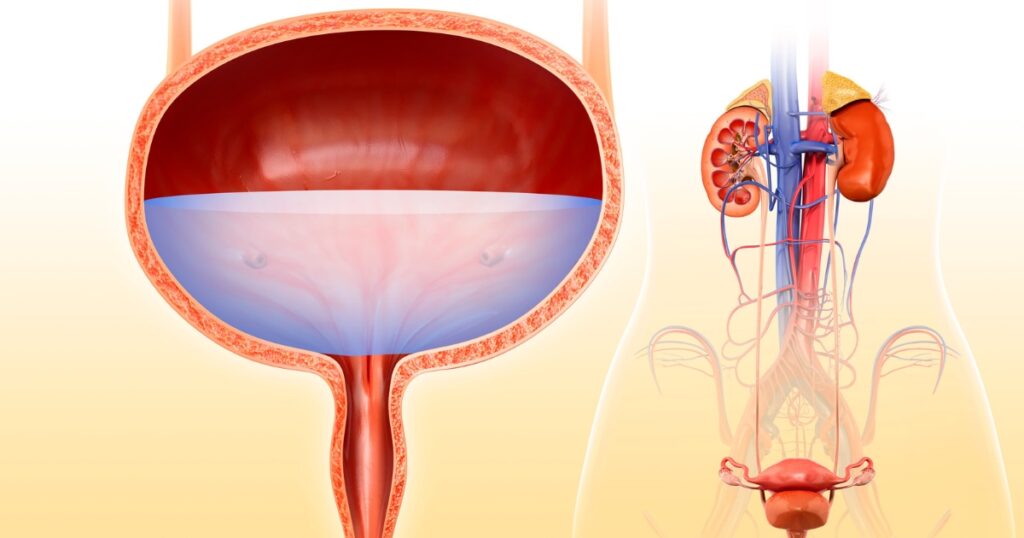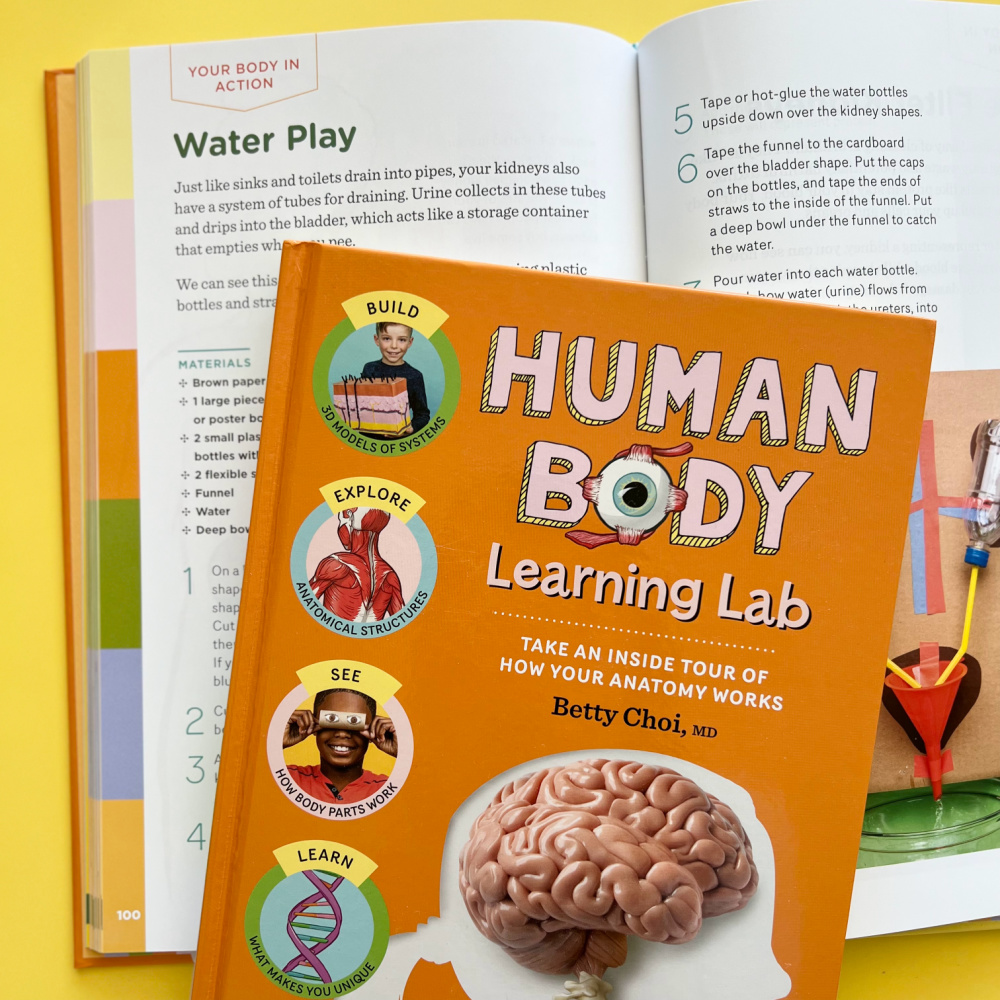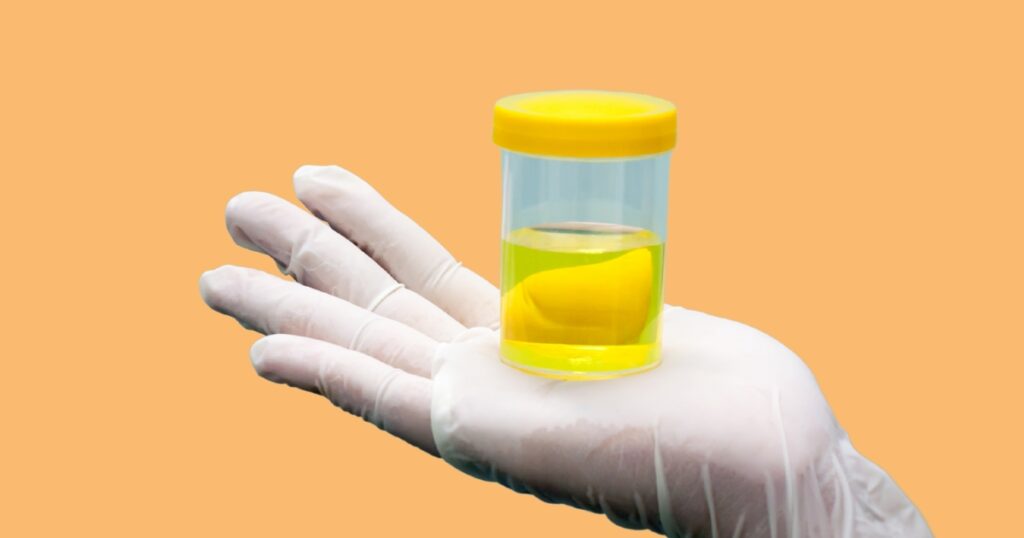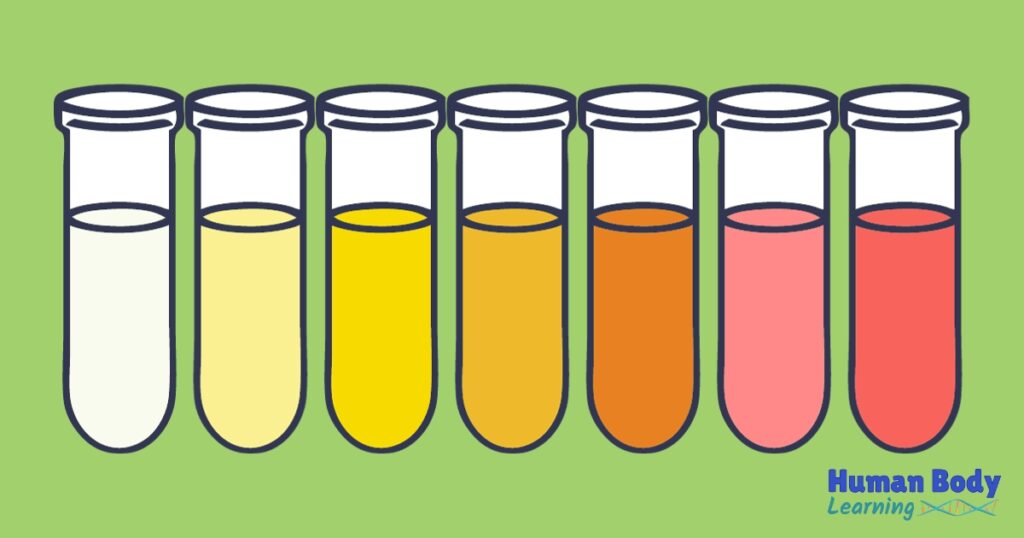How Does Your Body Make Pee?

Pee is your body’s way of removing extra fluid so your body doesn’t puff up with water. Your body makes pee to get rid of waste, too! Sometimes pee color is yellow; other times, it is clear. So, how does your body make pee? This job belongs to the urinary system – your body’s way of making urine, the scientific name for pee.
What’s the difference between the urinary system, urinary tract, and renal system?
Sometimes, the urinary system is also called the renal system or urinary tract. An organ system can have a few names, like people with different nicknames!
Body parts that make pee
Let’s follow the path of pee! Along the way, we’ll meet the key players of the urinary tract team.

Kidneys
Your kidneys are like cleaning stations for your blood. This pair of bean-shaped organs is located in your lower back.
Most people have two kidneys, but some have one kidney that does all the work.
Blood vessels flow through each kidney, like how cars drive through a car wash to get rid of dirt and gunk.
Nephrons
Inside the kidney cleaning station are millions of tiny tubes called nephrons. These nephrons filter your blood and flush out toxins and extra fluid.
Nephrons need to be careful and keep the good stuff in your body.
While filtering out waste, nephrons keep nutrients like protein and sugar in your blood.
Then, the leftover liquid becomes urine (pee), which flows down the ureters.

Ureters
Just as your sinks and toilets drain into pipes, your body has tubes called ureters that collect urine.
The right ureter connects the right kidney to the bladder, while the left ureter connects the left kidney to the bladder.
In adults, each ureter is around 8 to 10 inches long – just a little shorter than a ruler!
Bladder
Then, urine drips into the bladder, a muscular, pear-shaped organ at the bottom of your belly. The bladder acts like a storage container that we empty when we pee.
Depending on how often you go to the bathroom, your urine can hang out in the bladder for a while! Your bladder needs to stretch and get bigger to make room for more urine. When you go to the bathroom, the bladder squeezes urine out of your body.
Usually, the bladder goes back to its regular size after you pee. But if you habitually hold your pee too long instead of letting it out, your bladder muscles can weaken and stretch out. When the bladder muscles are weak, urine can leak out—oops!
So, as the saying goes, when you gotta go, you gotta go!
Urethra
Whew! Urine is just about to cross the finish line!
Urine needs to flow through one more tunnel, a tube called the urethra. The urethra’s job is to carry urine from the bladder out of the body.
But not so fast!
At the end of the urethra, you have a sphincter muscle that you can control. When you are holding in your pee, the sphincter is closed. The sphincter opens when you decide to pee or can’t hold it anymore.
Video of how your body makes the pee you see
Here’s a cool video of the bladder filling up and emptying. Watch urine flow into the bladder. When the bladder feels full, it will squeeze urine out of the urethra!
Why do some people rush to pee?
Sometimes, the urge can come on fast! Have you heard of these common causes of rushing to the bathroom?
- Large, hard balls of poop can put pressure on the bladder. This is what happens to constipated kids and grown-ups.
- In pregnant women, a growing baby can put pressure on the bladder.
Roadblocks: when urine can’t get through
In some people, the ureters or urethra might not fully develop.
In other people, a kidney stone or cancer could block the ureters.
Anytime a tube is blocked, a person can have pain and problems with urinating. If urine can’t get through the ureters or urethra, doctors can help fix the problem.
3 Tips to keep your urinary system healthy
Learn how your body makes pee!

From the kidneys down the ureters and then out the bladder, you can see how your body makes pee from a fun and simple activity in the Human Body Learning Lab book!
Human Body Learning Lab is filled with kid-friendly science facts, memorable experiments, diverse realistic images, and practical health tips.
Have fun learning about your amazing body!
Published on March 17, 2022. Updated on January 23, 2024 by Betty Choi, MD
Published on March 17, 2022. Updated on January 23, 2024 by Betty Choi, MD

Betty Choi, MD
Dr. Betty Choi is a Harvard-trained pediatrician who makes learning fun and doable. She created the kids’ anatomy book Human Body Learning Lab, which Science Magazine recommended as a “notable standout in the genre.”


